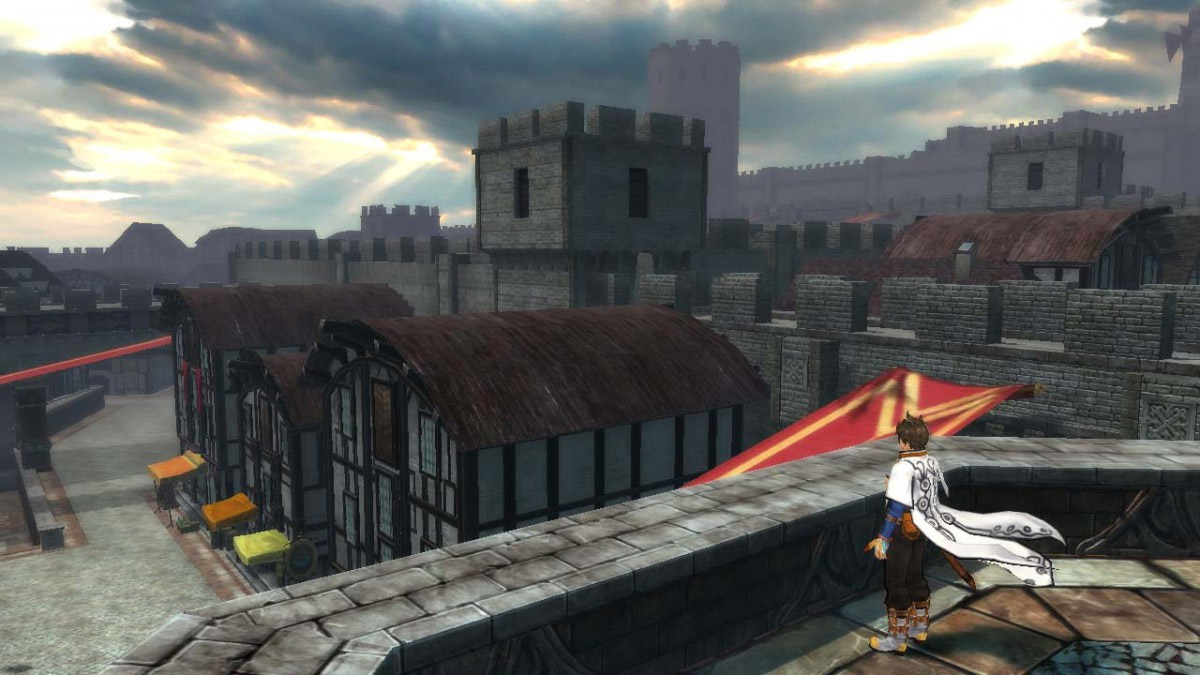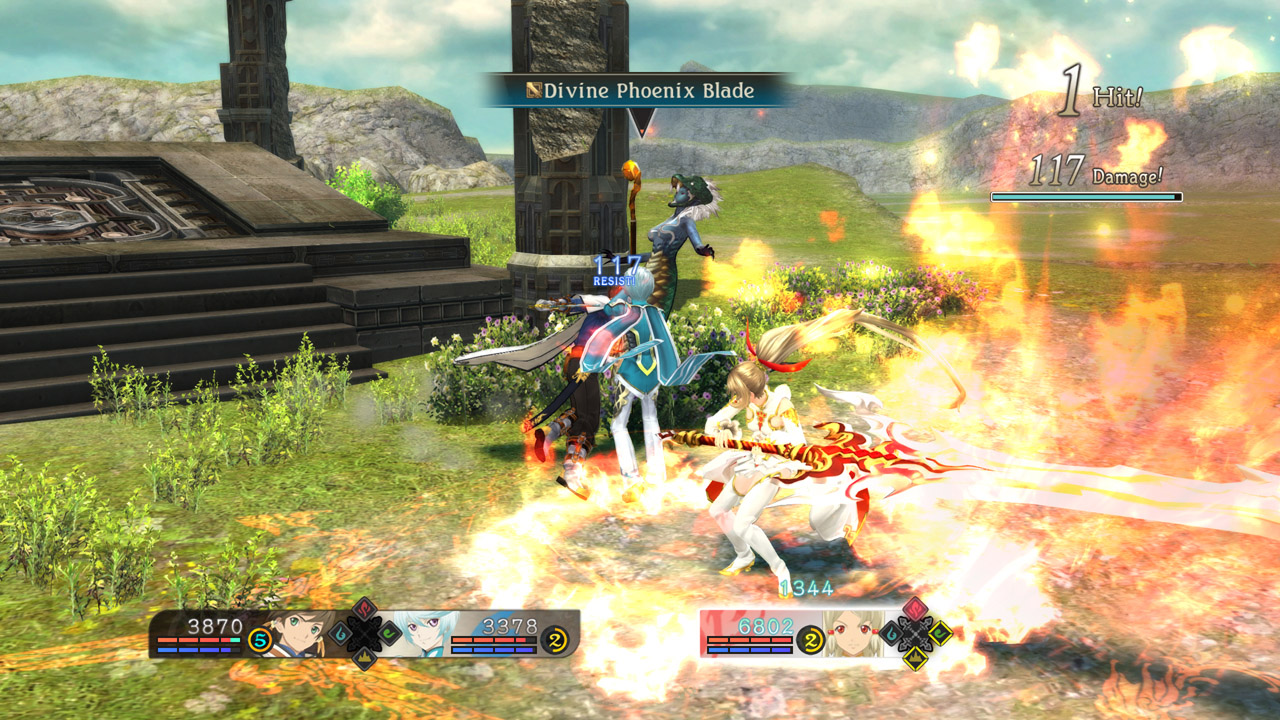

Tales of Zestiria is a milestone title in the Tales series for a couple of reasons: it’s the 15th main entry in the aforementioned franchise and it was designed to be the 20th anniversary Tales title. It’s also the first Tales game to release on the PS4 (albeit, only in the west). Does it live up to expectations? Let’s find out.
If you’re reading this review, you likely fall into one of two camps: 1) you’re a Tales series fan (in which case, you’ve probably already bought the game - and let’s be real here, you’ve probably beaten it), or 2) you’ve played and enjoyed a couple of Tales games in the past (probably a long time back) and you’re wondering if Tales of Zestiria is a good one to pick up. I’ll try to balance this review to apply to both of these demographics.

One thing you should know about Tales of Zestiria (henceforth, ToZ) right off the bat is that it both honors where the series started as well as introduces some new elements. As a 20th anniversary title, the creators wanted to go back to the franchise’s pure fantasy roots, and ToZ delivers that in spades. The world is chock-full of magic, complete with angel/spirit beings called Seraphim, demons, and dragons. After a full 20 years of Tales, though, fans would surely want to see some cool innovative things as well. ToZ answers this with the most open world experience in the series to date, complete with more side quest options than I’ve ever witnessed in a Tales game. For the first time, encountering enemies in the field brings players into a zoomed in version of that part of the map, not a separate battle screen (more on this later).
ToZ has also been very clearly influenced by recent titles in the series. The combat system is an action point system (as opposed to a TP/mana system which is the standard for the series), which has a lot of similarities to the action point system found in Tales of Graces f. There’s an “Armatization” mechanic where two characters fuse into one that feels like a very natural evolution of the linked artes found in Tales of Xillia. These are both features that I greatly enjoy about ToZ.

The story focuses on a young man named Sorey, who is gifted with the affinity to see and interact with Seraphim. Seraphim are a physical embodiment of magic in the world and their blessing keeps locations healthy and prosperous. Their inverse are Hellions, which are created when bad or evil emotions grow in the heart of living creatures. To sum everything up very briefly, the major driving force behind the plot is that less and less humans are able to see and interact with the Seraphim and more and more Hellions are being created, driving the world closer to a bleak end. Sorey, who takes on the legendary title of Shepherd early on in the game, is tasked with the monumental task of driving the world back from this dangerous path. Fortunately, he has the help of a lot of powerful Seraphim and some pure-hearted humans as well.
While I’m fairly neutral on the overall plot of the game, I quite like the cast of characters presented in ToZ. While there are stereotypical aspects of all the characters, there's more going on with them than it first appears. In my opinion, the cast meshes together very well, and for once I actually feel like every party member has a strong reason for being a part of the team, complete with their own motivations.
On the co-op side of things, I found ToZ to be one of the strongest in the series. As usual, only one player controls the leader on the map or in the field, but up to 4 players can play co-op on the battle screens. Players can play two-player co-op nearly from the start of the game. As expected for a Tales game, however, it’s a bit longer before a third party member is added for any length of time and even longer for a full complement of four. Just like the last several Tales games, however, ToZ plays best in two-player co-op. Much of this revolves around the aforementioned Armatization mechanic. Since the human and Seraphim character literally fuse together, only one player can control this combined character which leaves the other player with nothing to do at all. Since this is a very strong mechanic, the game’s difficulty curve counts on players to use it.
There’s a whole lot I really like about ToZ. The game makes it very easy to swap different Seraphim in and out of the party. With the full complement of characters, players will have a Seraph of each of the 4 elements (humans are more physical than elemental focused). Since players no longer have to worry about conserving their TP, ToZ instead asks them to instead pay attention to resistances and vulnerability. Swapping in the correct Seraphim for the situation makes a huge difference, and I like strategic battle decisions such as this in games. I also enjoy the open world feel to the game. For the first time in a Tales game, I feel like the world is a cohesive unit instead of feel like I’m being shown little selective chunks of the world at a time. I like the optional side quests in the world as well as the optional bosses who drop items that increase HP of all party members.
If I have one complaint about the game, it goes back to how the battle screen is now on the world map. Conceptually, it’s great. It makes me feel like I’m actually fighting them out in the world and it really helps with making the world seem cohesive. The problem is the camera. Too often the camera flips to an awkward angle, or ends up behind a wall, or zooms way out (or way in). Player 1 can rotate the camera to attempt to remedy the situation, and while sometimes this helps, other times the camera simply cannot find a good angle (such as fights that occur in very narrow dead ends). All in all, it’s probably worth it (the delay of entering combat is close to nothing now), but it could have used some polishing. I’m confident, however, that later games (if they choose to pursue this style) will be better in this regard.
In the end, I found ToZ to be a very satisfying installment to the Tales series, but your mileage may vary. As a lover of action point systems, high fantasy, a penchant for the types of characters found in ToZ, and a series fan to boot, I was clearly within the game’s target demographic. If you like these things, too, then I’d highly recommend checking the game out, especially since I think the two-player co-op is the strongest yet for the series. If you’re not so much a fan of those things, then you might want to give it a pass.
Tales of Zestiria is out now on PS4, PS3, and PC with up to 4-player co-op (though only really 2-player co-op is advised).
Tales of Zestiria was reviewed with a PS4 version of the game provided by the publisher.